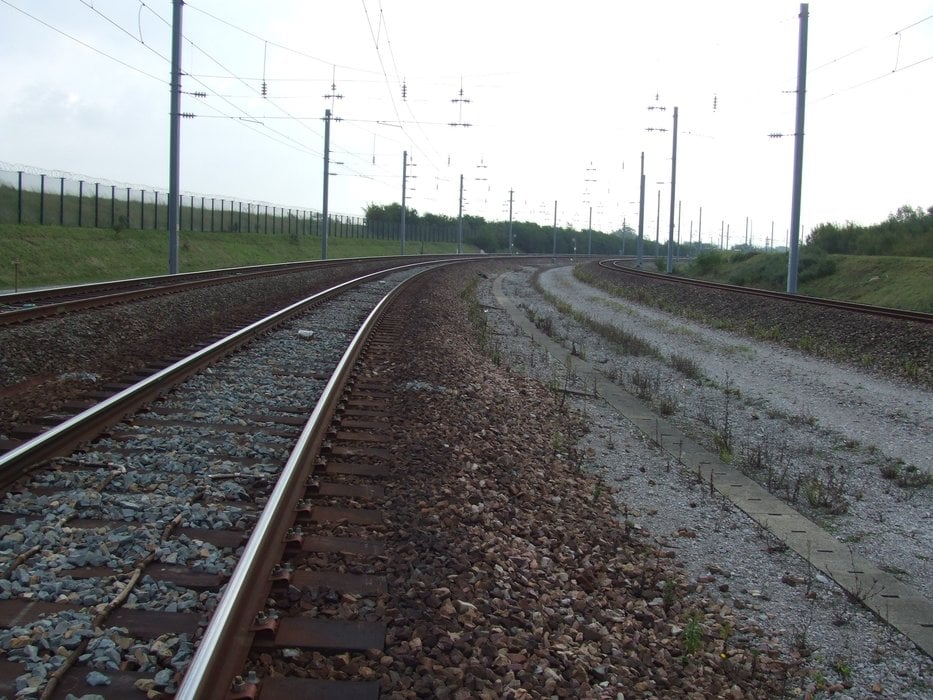www.industrymiddleeast.com
20
'08
Written on Modified on
Corus selected by Eurotunnel to increase rail life by 50%
The Channel Tunnel is the most heavily used railway line in Europe, with annual traffic of more than 100 million tons, which causes rapid degradation of the rails both in the tunnel and in the terminal loops. Studies initiated by Corus with its bainitic and MHH extra-hard heat-treated rails are aimed at increasing their life by 50%.

Eurotunnel encounters two types of problem related to rail wear. First, in the tunnel, rails are affected by cracks (fatigue defects), which oblige the operator to regrind them regularly and replace them completely after 650 million tons of traffic, equivalent to about every six years. Second, the rails in the terminal loops in France and England wear extremely rapidly because of the small curve radius of the track (between 300 and 500 m). These lines are used by the shuttles to turn around in order to go back through the tunnel in the opposite direction.
To solve these two problems, studies have been initiated, subsidized by the French state within the framework of competitiveness cluster I - TRANS - TTSA (Track Train System Availability) project. The rails sub-project is directed by Corus Rail France, partnered with Railtech for the thermit welding of rails and by INSA Lyon, which is the university institute studying wear and cracking mechanisms.
Corus has supplied the rails for three test areas. First, bainitic grade rails for the tracks in the tunnel. This type of steel is known for its fatigue resistance in the mechanical engineering industry, but is an innovation in rails. These steels are more resistant but also more difficult to work; the bloom manufacturing processes have to be adjusted and the right chemical composition identified. Next, MHH extra-hard heat-treated rails have been laid in the two terminal loops. Particularly wear-resistant, they are used for heavily-loaded mine tracks, for example. Their production is made possible by the development at the Corus plant at Hayange of a specific heat treatment procedure which avoids the need for roller straightening in the final stage. This procedure leaves an extremely low level of residual stress in the rails, which substantially reduces the risk of crack propagation in the web of the rail.
The declared objective of the study is to lengthen rail life by 50%, both in the tunnel and in the terminal loops. The MHH test rails were laid in April and September 2007. The bainitic rails were laid in January and March 2007. For the time being the results are on target, but the study will not be completed for another four years. The long-term commercial aim is to replace the 56 km of double track in the tunnel and the 15 km totalled by the loops in France and England.
About 15,000 tons of heat-treated rails have been supplied to Eurotunnel by Corus over the last four years.
www.corusrail.com
To solve these two problems, studies have been initiated, subsidized by the French state within the framework of competitiveness cluster I - TRANS - TTSA (Track Train System Availability) project. The rails sub-project is directed by Corus Rail France, partnered with Railtech for the thermit welding of rails and by INSA Lyon, which is the university institute studying wear and cracking mechanisms.
Corus has supplied the rails for three test areas. First, bainitic grade rails for the tracks in the tunnel. This type of steel is known for its fatigue resistance in the mechanical engineering industry, but is an innovation in rails. These steels are more resistant but also more difficult to work; the bloom manufacturing processes have to be adjusted and the right chemical composition identified. Next, MHH extra-hard heat-treated rails have been laid in the two terminal loops. Particularly wear-resistant, they are used for heavily-loaded mine tracks, for example. Their production is made possible by the development at the Corus plant at Hayange of a specific heat treatment procedure which avoids the need for roller straightening in the final stage. This procedure leaves an extremely low level of residual stress in the rails, which substantially reduces the risk of crack propagation in the web of the rail.
The declared objective of the study is to lengthen rail life by 50%, both in the tunnel and in the terminal loops. The MHH test rails were laid in April and September 2007. The bainitic rails were laid in January and March 2007. For the time being the results are on target, but the study will not be completed for another four years. The long-term commercial aim is to replace the 56 km of double track in the tunnel and the 15 km totalled by the loops in France and England.
About 15,000 tons of heat-treated rails have been supplied to Eurotunnel by Corus over the last four years.
www.corusrail.com

